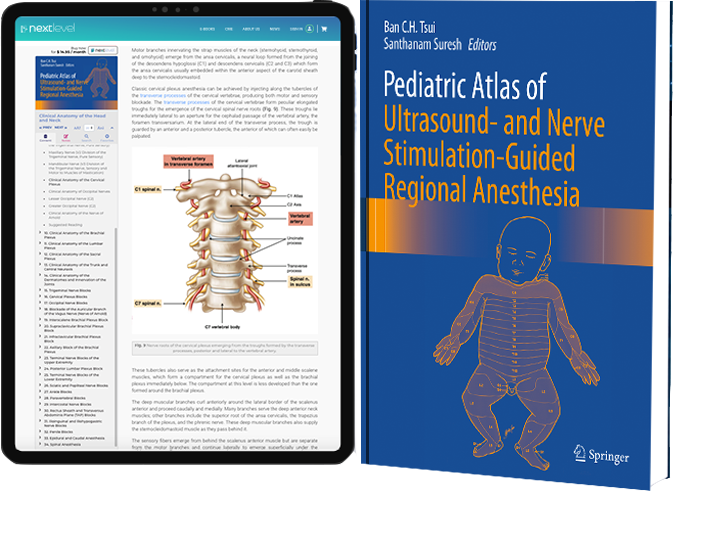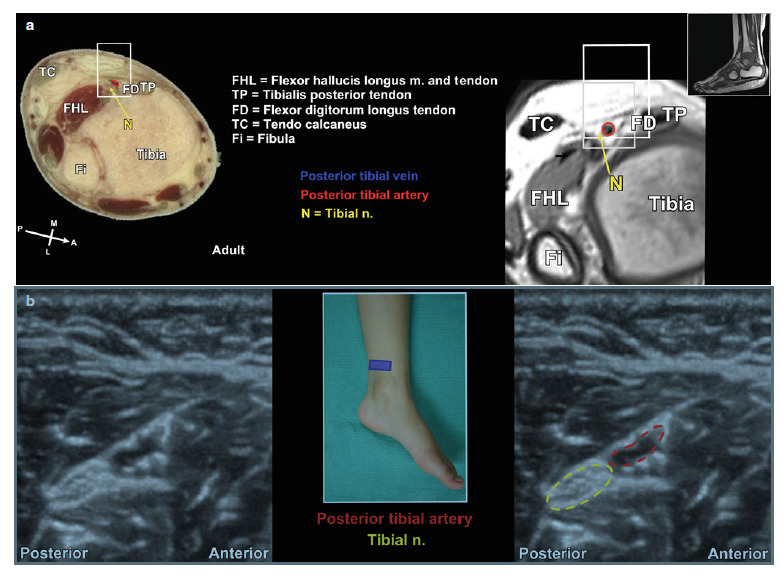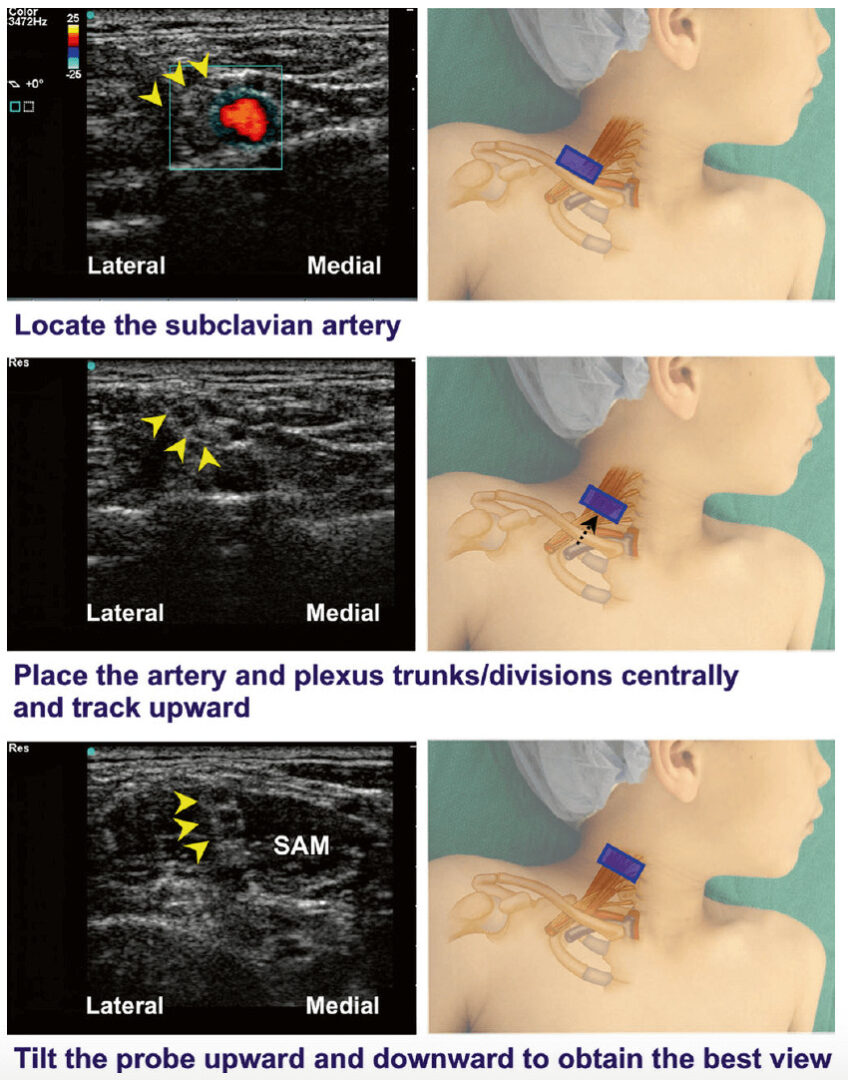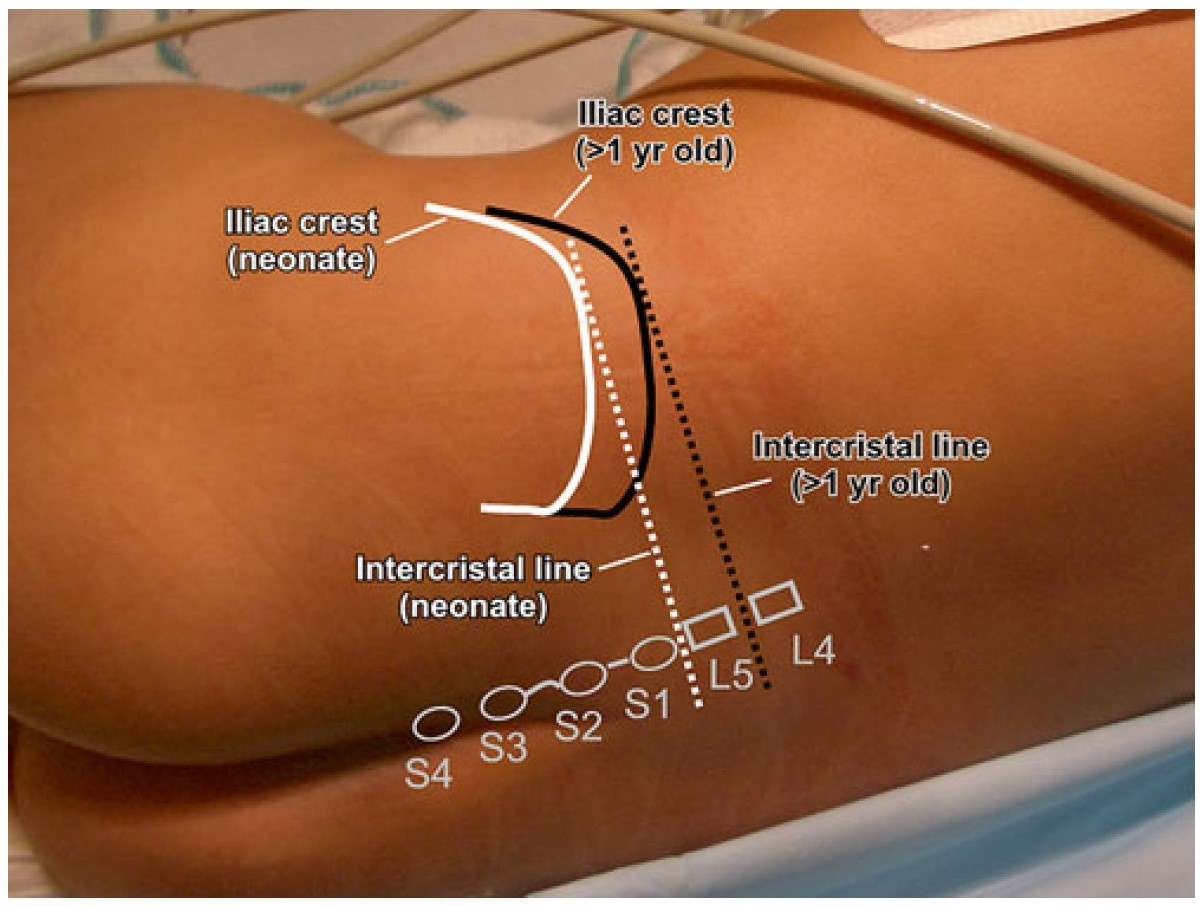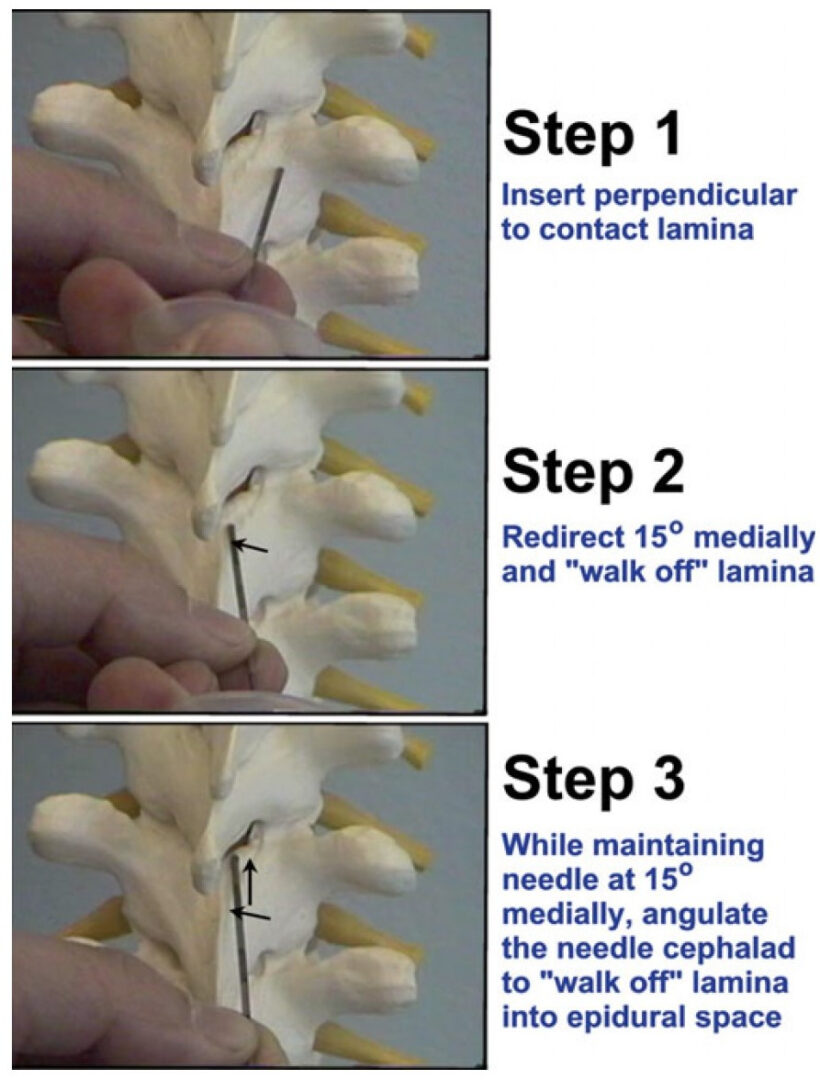Pediatric Atlas of Ultrasound and Nerve Stimulation-Guided Regional Anesthesia
Editors: Tsui, Suresh
Publisher: Springer
- A 5–10 MHz hockey stick probe can be used for most children and will allow good axial resolution of the nerve in order to distinguish it from the surrounding structures (vessels and muscles).
- Position the probe transverse to the nerve axis in the proximal thigh, approximately 0.5–1 cm inferior to the inguinal ligament and along the inguinal crease. The nerve should appear approximately 0.5–1 cm deep (depending on the size and age of the child) and just lateral to the femoral artery.
- Color Doppler may be used to localize the femoral artery and vein.
- If the nerve is difficult to characterize, as in obese children, a useful reference landmark is the profunda femoris (deep femoral) artery (Fig. 7a). Scan distally to locate the point where profunda femoris artery branches off deep to the femoral artery (Fig. 7b). Trace this artery proximally again to its convergence with the femoral artery; the femoral nerve will be located lateral to the artery.
- Tilting the probe from perpendicular usually helps to improve the visualization of the femoral nerve.
- Color Doppler may be used to localize the profunda femoris artery (Fig. 7b).

Fig. 7 (a) VHVS and MRI images of the profunda femoris artery. (b) Ultrasound image with color Doppler used to localize the profunda femoris artery.
Enriched with NextLevel CME™ technology:
– Make notes in seconds and never lose them
– Insert your own images, infographics
– Add and watch videos inside your notes
– Attach PDFs, articles, website links
– Listen to the audio
